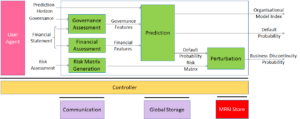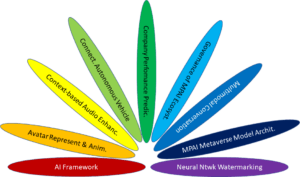I think that the publication of the MPAI Metaverse Model (MPAI-MMM) standard last week is an important step in making the metaverse a viable proposition because it provides practical means for an implementer to develop a metaverse instance (M-Instance) that interoperates with another similarly developed M-Instance.
This post has the moderate ambition of just describing the high-level content of the standard looking at the Table of Contents.
Foreword obviously deals with general matters, such as the AI Framework (MPAI-AIF) standard and the MPAI Store, but also with the recent notion of Qualifier introduced by the Data Types, Formats, and Attributes (MPAI-TFA) that enables a machine to communicate its technology choices to another machine, a vital component if interoperability (but you can see A new type of data about data).
Introduction includes a summary of the work carried out by MPAI in the MMM projects: two technical reports and two standards.
Scope formalises the meaning of metaverse interoperability.
Definitions defines some 150 terms used by the MMM standard.
References provides a set of normative and informative references.
Operation despite of it being an informative section, it lays down the main elements of the MMM operation.
Processes, Actions, and Items are the steel, cement, and bricks of which the MMM building is composed. Processes perform Actions on Items (data) to achieve a goal and usually need the help of other Processes to reach it.
Scripting Language (MMM Script) helps a Process to communicate its needs and requests in a standard and efficient way. It also provides a rigorous human readable method to describe use case using Processes, Actions, and Items.
Profiles provide a simple way to achieve interoperability avoiding the need of possibly costly and useless (for the application) technologies.
Verification Use Cases is the moment of truth for MPAI-MMM. MMM Script is used to describe nine rather complex use cases covering widely different domains to show that the MMM-specified technologies can support the identified used cases.
Not sure that the above will convince you to read the MPAI-MMM standard from page 1 to the end (but MPAI-MMM is published as a series of connected web pages -:), I hope you can dedicate 15 more minutes to read Operation where you will learn more about the internals of MPAI-MMM.



